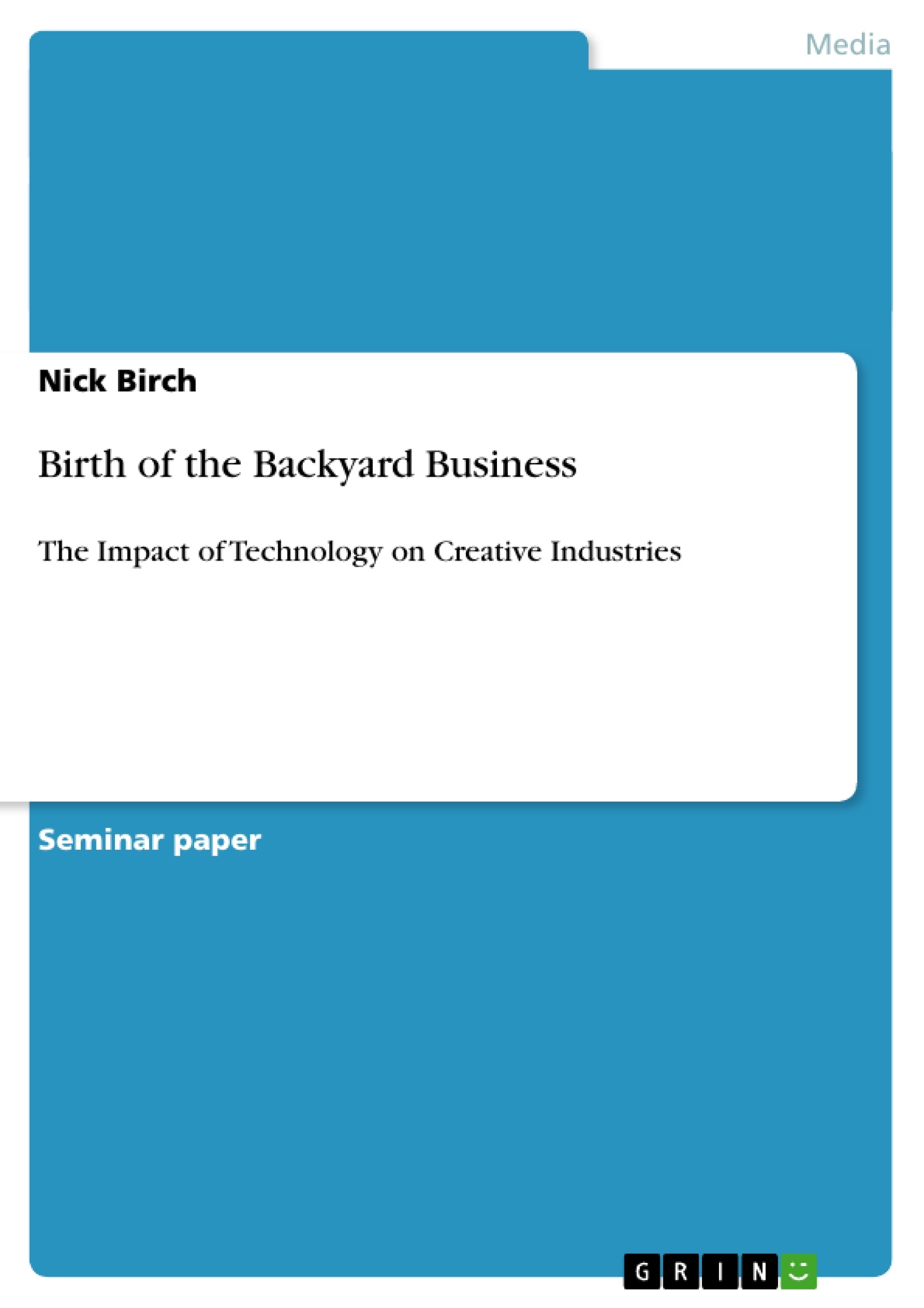Technology is evolving faster than we can shake an iPod at, and like a frenetic silhouette on a primary-coloured backdrop it is difficult to see the entire picture – you are only left with a gist of what on earth is actually going on, a feeling that you want to jump up and be a part of it. Even though it helps to analyse the progress of technology in the creative fields historically, it still remains implausible to predict exactly where it will take us even in the near future. The film, television and music industries are an interesting source to start with where we may begin to understand some of the ways technology is not only enhancing the ability to create more, but also the way it affects the way business is performed.
BIRTH OF THE BACKYARD BUSINESS
The Impact of Technology on Creative Industries
Nick Birch 2009
Technology is evolving faster than we can shake an iPod at, and like a frenetic silhouette on a primary-coloured backdrop it is difficult to see the entire picture – you are only left with a gist of what on earth is actually going on, a feeling that you want to jump up and be a part of it. Even though it helps to analyse the progress of technology in the creative fields historically, it still remains implausible to predict exactly where it will take us even in the near future. The film, television and music industries are an interesting source to start with where we may begin to understand some of the ways technology is not only enhancing the ability to create more, but also the way it affects the way business is performed.
The late-nineties and early millennia saw a profound change in the way creative industries operate. It’s pertinent to realise that while technology has been enhancing the creative industries to no end, in fact, to the point of fear, the creative industries have in turn been demanding the enhancement of technology. And what is the greatest demand of all? Price.
Technologies designed for creative industries have all kinds of domino effects on other technologies used in different sectors. The advent of digital High-Definition gave filmmakers a cheaper and very competitive alternative to using film (Lantz 2009), instead using digital tape rather than enduring the processes of film and everything that entails. Expensive stock, developing, the time-consuming process of telecine where the film is transferred to digital tape, scratches and dirt removed and finally colour-graded all for an hourly rate that would make a law firm blush. Even better, since what has been shot is already in digital format, filmmakers such as George Lucas could then shoot with metadata making it easier for the graphic artists to add their effects (Scan 2003, p.4) (Bennet 2003). This was also great news for smaller productions on a budget. Now cameras are capturing images as files rather than tape, such as the Panasonic P2 (VideoCraft 2009) and Sony XDCAM (Scan 2004, p.9). Editing system manufacturers such as Avid, a self-proclaimed ‘worldwide leader in tools for film and video’ (Avid n.d.), have barely had time to catch up with this rapidly evolving technology, with a newer version of the software being released almost before the last. Avid are dropping the hardware and bundling more into software only products (Adcock 2009) in a desperate bid to keep up with their competition (Morris 2009) (JamieG 2009). Companies like Final Cut Pro (Apple) and Adobe have exploited what technology can make possible and made it available for a fraction of the price of what Avid has in the past, forcing Avid to swim along or sink away unless a swift reaction was mobilised.
[...]
- Quote paper
- Nick Birch (Author), 2009, Birth of the Backyard Business, Munich, GRIN Verlag, https://www.grin.com/document/269614
-

-

-

-
Upload your own papers! Earn money and win an iPhone X. -

-
Upload your own papers! Earn money and win an iPhone X. -

-
Upload your own papers! Earn money and win an iPhone X. -

-
Upload your own papers! Earn money and win an iPhone X. -

-
Upload your own papers! Earn money and win an iPhone X.

